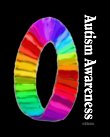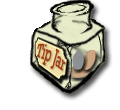Autism seems to have it’s own alphabet soup language going on, and they have made their way into my lexicon to the point I hardly notice it any more. However, if you are reading my posts, you might not know the terms, so I am starting this handy dandy decoder for all of you NTs out there.
Apraxia Motor planning/muscle coordination, especially in the mouth. Has a difficult time coordinating all of the muscles of the mouth to organize them well enough to speak clearly. The result is inconsistent articulation…sometimes he is able to pronounce a sound, sometimes it eludes him.
ASD / ASC Autistic Spectrum Disorder / Condition
Curbies Generally speaking, people seeking to “cure” autism. Jenny McCarthy, etc. See autism as a huge tragedy stealing away the child. See autism as something separate and seek to eliminate it. PC term in this group is “Person with Autism” because autism is seen as something acting on the individual, but not a part of them.
Hyperlexic An early interest in letters and numbers. The ability to read (phonetics, word attack) at a higher level than you can comprehend. For instance, Zane was tested in Kindergarten and found to read at the 2nd & 3rd grade level, but his comprehension was at the early kindergarten level.
Hypersensitive Everything feels more intense than it should. For example: clothes feel like sandpaper, lights seem brighter, incidental sounds (fluorescent lighting, scratch of pencils on paper, scratching an itch) all sound loud and in the foreground instead of blending into the background. Might perceive slight touch as intense pain.
Hyposensitive Unable to perceive sensory input, everything is less intense. Like your mouth feels after the dentist puts in the lidocaine, or diabetics who can’t feel their feet very well. Might have extreme difficulty pinpointing where pain is coming from or grossly underreacting to severe pain (like not reacting to a broken arm or appendicitis)
Motor Planning Basically, coordination.
Neurodiversity The belief that atypical (neurodiverse) development is a valid variation of human development and should be respected and accepted, not eliminated. The goal of therapy is to learn how to cope with the NT world. PC term in this group is “Autistic person/Autist” because Autism can not be separated from the person.
NT Neurotypical. Typically developing as opposed to Autistic.
OT Occupational Therapy. For kids, this means things like dressing skills (pulling on clothes, buttons, zippers), school skills (scissors, holding a pencil) and includes both fine motor skills (pincher grasp, threading, manipulating small items) and gross motor skills (doing jumping jacks, running, skipping, climbing). Includes addressing both motor planning skills and sensory issues.
ST Speech Therapy. For autistic kids, it is often more heavily on the side of language therapy…helping them understand and use language, both verbal and non-verbal. Zane also has some articulation issues due to apraxia.
Stim Self Stimulatory behaviors. (or Stereotypy). When your sensory system takes in information atypically, either more intense (hypersensitve) or less intense (hyposensitive) than what most people experience. To try and make it normal in your brain (regulate) you have an set of behaviors that either tries to block out the sensations or increase the sensations. The behaviors exhibited are some of the hallmarks of autism. Some of the biggies are: rocking, chewing, hand flapping, humming, licking, sighting (looking out of the corner of your eyes at something), finger rolling (and other unusual hand and body posturing), spinning, and making patterns (ordering and lining up things). One of Zane’s big ones is shaking his head back and forth to feel his hair slap against his face. He gets super upset if we try and cut his hair.

